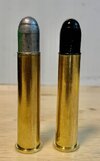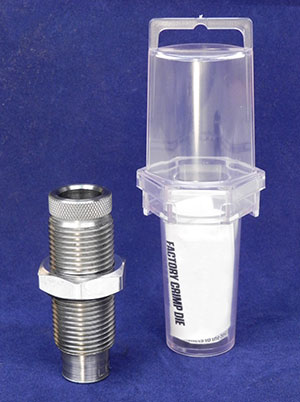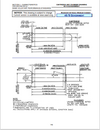I found exactly what is happening:
I iteratively reduced the COAL of a cartridge that I seated an UNcoated bullet into, until it would properly chamber. It chambered properly, still snugly but without undue force and still removable via ejector, when I got down to a COAL = 2.799". That is .036" below the recommended COAL of 2.835". Not too bad a COAL reduction.
BUT, the ogive has at that point a very prominent circular "ditch" in it where it is contacting metal in the rifle, probably the throat?
And, when I try the same iterative reduction with the powder coated bullet, I canNOT get it to chamber properly. In fact, it gets WORSE, presumably because the ogive is being "fattened" even more by being pushed into metal. I stopped trying at COAL = 2.784", by which time the cartridge was a good half inch from being chambered!
Here's a photo of both cartridges:

You can clearly see:
1. The case mouth is now well above the top lube groove and on the topmost driving band (which is only about 1/16" tall)
2. Both cartridges have significantly damaged ogives that show a prominent ring ditch.
The cartridge with the UNcoated bullet in the photo is at that 2.799" COAL I mentioned. The cartridge with the powder coated bullet is at 2.784" COAL.
By the way, the damage to both bullet shanks at the crimp is due to the stronger crimping i first tried, BEFORE trying to reduce the COAL, now acting as a "scraper" as I pushed the bullets deeper into the cases.
I have also Googled this Lyman mold / bullet. If you look hard enough for postings on this specific mold, you will see MANY people have run into this exact same problem, and have chnaed to Saeco or Accurate or other brands of molds that offer less bulbuous ogives for this specific reason,
It also turns out that this Lyman mold does NOT accurately copy the original U.S. military design. It was fattened. When too many people evidently ran into this problem, Lyman "skinnyed' it a bit, but it is still more bulbuous than the original U.S. Military bullet.
Conclusion: I likely have to give up on trying to use this brand new costly mold (over $162 CDN landed in Canada, by buying the last one actually available in North America at the time I bought it). I need an bullet that has a "slimmer" ogive.
I suppose this means that my chamber's throat is desirably snug, so that's a consolation. I just need to find a better shaped bulelt that can UTILIZE that snugness.
And this finding significantly undermines my confidence in both Lyman and Mike Venturino. My detailed Google investigation of forum contents shows that Lyman clearly has created some dimensional issues with this mold. And Mike Venturino, who wrote almost all of the text content in the Lyman Cast Bullet Handbook, and who recommended this mold SO highly, clearly had not done his homework before submitting the text for publishing.
Jim G





